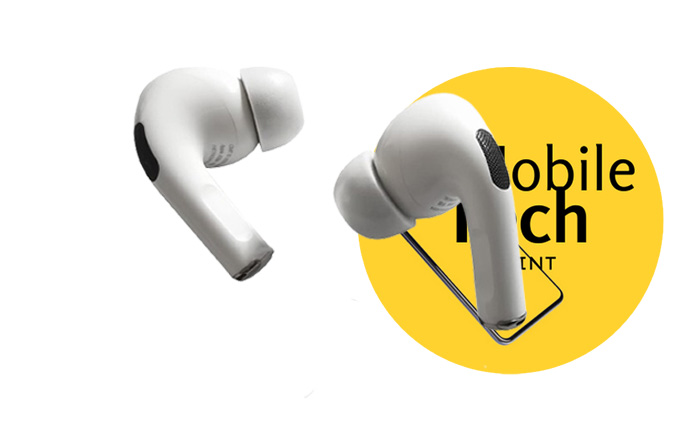Ear fatigue is a common issue for many people who use earbuds or headphones for extended periods. It manifests as discomfort, soreness, or even pain in the ears after prolonged listening sessions. As earbuds become an integral part of daily life—whether for work, entertainment, or exercise—finding ways to alleviate ear fatigue has become increasingly important. Memory foam ear tips, known for their comfort and adaptability, have gained popularity as a potential solution. This blog post explores whether memory foam ear tips can indeed help reduce ear fatigue and improve the overall listening experience.

Understanding Ear Fatigue
Ear fatigue refers to the discomfort or strain experienced in the ears after extended use of earbuds or headphones. Symptoms may include aching, pressure, and even temporary hearing sensitivity. The primary causes of ear fatigue include poor fit, excessive pressure on the ear canal, and prolonged exposure to sound at high volumes. Addressing ear fatigue is crucial not only for comfort but also for maintaining good hearing health over time.
What Are Memory Foam Ear Tips?
Memory foam ear tips are made from a soft, pliable material that conforms to the unique shape of each user’s ear canal. Unlike traditional silicone or rubber ear tips, memory foam provides a custom fit that enhances comfort and sound isolation. The foam expands to fill the ear canal, creating a secure seal that reduces external noise and improves audio quality. This adaptive nature of memory foam ear tips makes them a popular choice for those seeking a more personalized and comfortable listening experience.
Benefits of Memory Foam Ear Tips
One of the primary benefits of memory foam ear tips is their ability to reduce pressure on the ears. The foam’s ability to mold to the ear canal means it distributes pressure more evenly, potentially reducing the strain that leads to ear fatigue. Additionally, memory foam ear tips offer improved sound isolation, which can allow for lower listening volumes and, in turn, reduce the risk of fatigue caused by prolonged exposure to loud sounds. The enhanced comfort provided by memory foam can also lead to longer listening sessions without discomfort, making them an attractive option for daily earbud users.
How Memory Foam Ear Tips Work
Memory foam ear tips work by adapting to the unique shape of the ear canal. When inserted, the foam compresses and then gradually expands to fill the available space, creating a snug, custom fit. This process not only improves comfort but also enhances the seal within the ear, which can help in reducing the amount of external noise that enters the ear canal. By providing a better fit, memory foam ear tips can minimize the need to adjust or reposition the earbuds, further reducing the likelihood of irritation and fatigue.
User Experiences and Testimonials
Many users who have switched to memory foam ear tips report a noticeable reduction in ear fatigue. Positive feedback often highlights the improved comfort and the ability to wear earbuds for longer periods without discomfort. However, experiences can vary depending on individual preferences and the specific earbuds being used. While some users find memory foam to be a game-changer in terms of comfort, others may prefer the feel of traditional silicone tips. Ultimately, personal preference plays a significant role in determining whether memory foam ear tips are the right choice for alleviating ear fatigue.
Choosing the Right Memory Foam Ear Tips
When selecting memory foam ear tips, it’s essential to consider factors such as size, brand, and compatibility with your earbuds. A proper fit is crucial for maximizing the benefits of memory foam, so it’s important to choose the correct size for your ear canal. Some popular brands that offer a variety of sizes and styles include Comply, Dekoni, and Symbio. Trying out different options can help you find the best fit for your needs and ensure that you get the most out of your memory foam ear tips.
Maintenance and Care for Memory Foam Ear Tips
To maintain the comfort and performance of memory foam ear tips, regular cleaning and proper care are essential. Clean the tips with a damp cloth and mild soap to remove dirt and earwax. Avoid submerging the tips in water, as this can damage the foam. Storing the ear tips in a cool, dry place when not in use can help prolong their lifespan. It’s also important to replace memory foam ear tips periodically, as they can lose their shape and effectiveness over time.
Alternatives to Memory Foam Ear Tips
While memory foam ear tips offer numerous benefits, they may not be suitable for everyone. Alternatives such as silicone, rubber, and custom-molded ear tips also provide comfort and sound isolation, albeit in different ways. Silicone tips, for instance, are more durable and easier to clean, while custom-molded tips offer a precise fit tailored to the individual’s ear shape. In some cases, these alternatives may be better suited for certain users, particularly those with sensitivities or allergies to memory foam.
Conclusion
Memory foam ear tips have the potential to significantly reduce ear fatigue by providing a more comfortable and personalized fit. Their ability to adapt to the shape of the ear canal can alleviate pressure and improve sound isolation, making them an attractive option for those who experience discomfort during extended listening sessions. However, individual preferences and earbud compatibility play a crucial role in determining their effectiveness. For those struggling with ear fatigue, memory foam ear tips are worth considering as part of a broader strategy to enhance comfort and protect hearing health.
Also Check:
- ISOtunes Xtra Bluetooth Earplug Headphones: Reliable Hearing Protection and Wireless Convenience for $49.99
- Shure MoveMic Two – Pro Direct to Phone Wireless Lavalier Microphones: Your Go To…
- JOYWISE U18C Bluetooth Headphones: $19.99 Waterproof Sports Earbuds with 16 Hours Playtime
- Edifier W820NB Plus: $55.99 Hybrid ANC Headphones with Hi-Res Audio and Fast Charge
- NANAMI Bluetooth Wireless Earbuds: IPX7 Waterproof, HiFi Stereo with 18 Hours Playtime for $26.83
